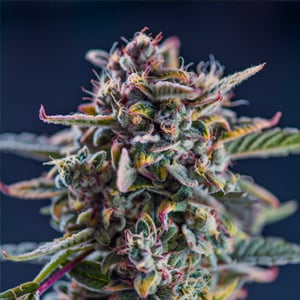PPF vs PPFD: Differences and What You Need to Know
If you've been researching horticultural grow lighting for any amount of time, you've likely come across measurements for PPF and PPFD. If you're unfamiliar with PPF and PPFD in LED grow lights, you're not alone. Two of the standard metrics for measuring horticultural lighting, these concepts are often misunderstood. Though their meanings and acronyms are similar, and both are measurements of light, they're actually completely different metrics.
As such, it is important to have a solid understanding of these concepts when making an informed purchasing decision on LED grow lights.
PPF
Photosynthetic Photon Flux, or PPF, is the measure of the number of photons emitted by a particular light source. While plants use light and spectrum beyond 400-700 nanometers (nm) for photosynthesis, the wavelengths of 400-700 nanometers (nm) of the light spectrum is referred to as photosynthetically active radiation or PAR. In the world of horticultural lighting, light that can be used by plants (PAR) is the primary concern; thus, PPF is a measure of the amount of PAR being discharged from a lamp or bulb.
Every lamp and bulb has its own PPF value, which is usually provided by the manufacturer. It should be noted that many companies have been known to exaggerate or mislead when it comes to PPF readings. The fact that gathering this data on your own can be extremely difficult doesn't help the matter.
Proper PPF readings require highly specialized instruments known as photometric spheres, an expensive piece of equipment that is not typically high on a grower's list of priorities. All too often, customers are left to take the word of lighting companies on PPF levels.
For this reason, it's always a good idea to check multiple sources for customer reviews, as well as sticking with reputable manufacturers and distributors.
PPFD
Photosynthetic Photon Flux Density, or PPFD, is a measure that also relates to the total numbers of photons of light between 400-700 nm. However, PPFD measures the number of photons that strike a particular surface area over a period of time. PPFD is calculated as micromoles of photons per square meter per second (µmol/m²/s), where micromoles represent the total number of photons of PAR. To state it more simply, PPFD is a reading of how many photons of light strike a square meter in one second.
PPFD readings are inextricably linked to the metrics of grow light distance from the canopy and whether the reading was singular or averaged from multiple readings. You're most likely to come across PPFD charts on grow light pages, appearing as colorful grids displaying the density of PAR, typically with the highest readings right in the middle.
These charts are always accompanied by an explanation of how high the grow light was hung when obtaining these figures, as the height from the canopy is a primary factor that influences PPFD.
Why the Confusion Between PPF and PPFD?
 A significant contributing factor to confusion within the lighting industry is the misrepresentation of PPFD values. Frequently, growers and industry professionals refer to PPFD as "PAR" when measuring and reporting their PPFD readings. All too often, manufacturers claim artificially-high PAR values as PPFD, leading to a false perception of product performance for consumers. Accurate PPFD readings are the result of all available light sources illuminating the canopy with their PAR, not the PAR/PPF reported by manufacturers on their data sheets.
A significant contributing factor to confusion within the lighting industry is the misrepresentation of PPFD values. Frequently, growers and industry professionals refer to PPFD as "PAR" when measuring and reporting their PPFD readings. All too often, manufacturers claim artificially-high PAR values as PPFD, leading to a false perception of product performance for consumers. Accurate PPFD readings are the result of all available light sources illuminating the canopy with their PAR, not the PAR/PPF reported by manufacturers on their data sheets.
Additionally, PPFD may be affected by the presence of multiple lamps or the angle at which lamps are hung, as it measures the light that falls on a surface, not light from its source. Fortunately, PPFD readings are much easier to take for oneself. Hand held, quality light meters can be purchased to measure the PPFD within your own grow room. Care must be taken to select a light meter that has been calibrated to the light source being measured e.g. HPS/HID, LED, Fluorescent.
Again, it's best to verify these measurements yourself if possible. A good PPFD reading will measure PAR from various points around the canopy and average those readings, as opposed to taking a single, centered reading.
PPF and PPFD are important concepts who's similarity in acronyms can be confusing. A good rule of thumb is to remember that PPF is the number of photons released by a light in any direction, while PPFD is the number of photons striking a surface area (of canopy) in one second.
When selecting horticultural lighting, it's never a bad idea to obtain a spectrometer and conduct your own PPFD readings. This information can help to verify further that the PPF values provided by the manufacturer are correct.
At TSRgrow, we offer advanced LED grow lights with all of industry leading PPF and PPFD values accurately represented, providing growers with the very best solutions to their lighting needs. We take pride in providing the highest quality products and unparalleled customer service to help you design and implement the most versatile, efficient horticultural LED grow lighting systems possible. Set up a complimentary consultation to see what solutions we can develop for you today.
